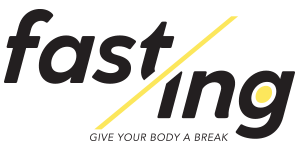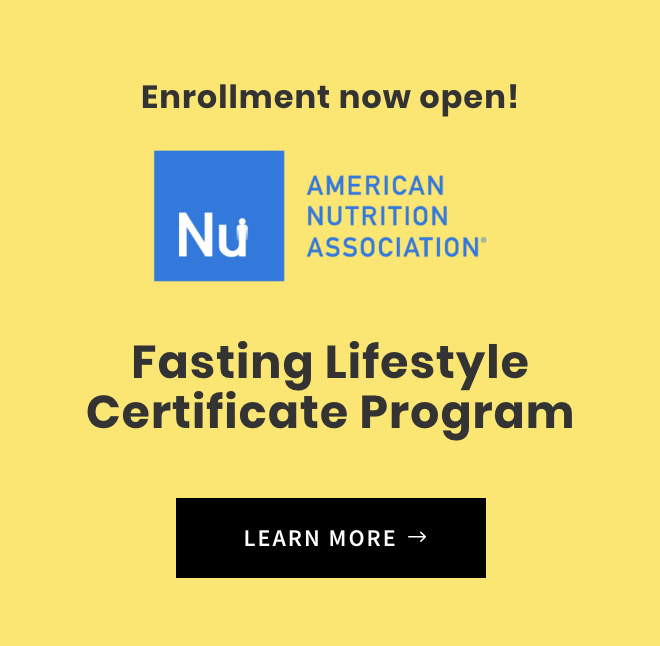Ketogenic Fasting

The Big Idea of Ketogenic Fasting
Combining a high fat, low carb diet with fasting is a powerful combination for your body and brain.
The ketogenic diet and fasting go together like bread and butter – or more aptly put, butter and butter. This is because successful fasts are dependent on ketosis: the ability to burn fat for fuel. And that ability is significantly increased while on the ketogenic diet.
Where you would normally take a few days to reach ketosis in a fast – and have to deal with fatigue and headaches until then – the adaptation process happens much faster when your body is already primed to metabolize fat instead of carbs. For this reason, ketogenic dieters often cycle in and out of fasting to take advantage of their fat-burning potential and to lose unwanted pounds.
People also use high-fat drinks to extend their ketogenic fasting windows. – Consuming high-fat coffee or tea in the morning keeps you feeling full for hours without the large insulin spikes or high doses of protein that would cancel out the benefits of fasting. There are even ‘fat fasting’ protocols that restrict calories to around half of normal and limit them almost entirely to fat.
Risks of Ketogenic Fasting
Most people automatically assume that more fat, especially more saturated fat like butter and coconut oil, would mean a greater risk of heart disease and atherosclerosis. But that’s wrong. In reality, higher levels of insulin (more carbs) are associated with the very diseases we’ve attributed to fat and cholesterol.
That said, there are low-level risks associated with ketogenic fasting:
- dehydration – much of the weight loss in the first two weeks is water loss
- nausea
- headache
- diarrhea – high-fat diets can cause GI symptoms until adaptation occurs
- exacerbated liver and gallbladder issues
- fatigue
- electrolyte imbalance
It’s important to consult your doctor before making any significant dietary changes or before starting a ketogenic fasting protocol.
How to Do Ketogenic Fasting
In order to start your own ketogenic fasting regimen, you’ll need to begin a ketogenic diet, then start an intermittent fasting schedule. Fat fasts are optional.
Starting a keto diet
To start a keto diet, you’ll need to do a lot of self-education to understand the types of foods you can eat, the foods you can’t eat, and what to expect in your first days and weeks of eating a high-fat, low-carb diet. You’ll also need to calculate the macronutrient levels (fat/protein/carbs) that will help you reach and sustain ketosis. This will vary from 10 grams of carbs per day for obese and sedentary people to 100 + grams of carbs for highly fit and active people.
(Getting keto shopping lists and meal plans is essential, too.)
Start intermittent fasting
Once you’ve gotten through the first week or so on a ketogenic diet, you’ll need to start an intermittent fasting practice. (You can choose to do prolonged fasts later on, but first things first, right?)
You can select from the following fasts:
- Time-restricted eating – eating all your meals within a 12-4 hour window, and fasting for the rest of the day
- 16/8 – fasting 16 hours per day, and eating all your meals in an eight-hour window
- OMAD (one meal a day) – eating dinner and fasting all the way to dinner the next day
- Alternate-day fasting – fasting every other day, and eating whatever you like in a 12-hour window on eating days. (Up to 500 calories can be consumed on fasting days)
- 5:2 – fasting on any two non-consecutive days out of the week, then eating whatever you want on the remaining five days
- 24-hour fasts – fast for 24 consecutive hours once or twice per week (lunch to lunch, dinner to dinner, etc.)
Doctors recommend starting with smaller fasts, like 12-hour daily fasts, and working your way up from there. And with ketogenic fasting, it’s perfectly acceptable to drink fat-containing beverages in the morning to help you achieve your fasting window. (Once you become fat-adapted, this usually isn’t necessary.)
Fat fasts
Simply limit your calorie intake to about 1,200 per day, and stick to around 80-90% fat. This can involve a few Bulletproof coffees, a couple fat bombs, and some fatty meat.
Don't know which fast is right for you? Read this article

Intermittent Fasting (IF)
Strategy that combines periods of eating with periods of fasting into a regular schedule.
Fasting With Water
The purposeful abstention of all food – solid or liquids – except for water.
Dry Fasting
DF is the abstinence of food and water. Total. Abstinence. Dry!
Medical & Healing Fast
Medical/therapeutic fasting is – eating nothing for medical advancements and natural healing.
Time Restricted Eating
The philosophy that aligns mealtimes with your natural circadian rhythm.
Fasting With Juice
Combine all your fruits & veggies into delicious juice for a select period of time.
Ketogenic Fasting
Combines keto dieting principles with routine periods of fasting for enhanced fat loss.
Spiritual & Religious
Spiritual and religious fasts have been part of almost every culture and religion throughout recorded history.
Prolonged Fasting
Fasting for 48 hours and over to
achieve health benefits and clarity.
Fasting With Food
Also known as Fasting Mimicking Diet (FMD), eating specific macronutrients to keep your body in a fasting state.
Alternate Day Fasting
The idea behind ADF is simple – eat one day, don’t eat the next.
Detox & Cleanse Programs
Focus on improving liver health, the main detox organ, and nearly all of them enhance elimination and digestion.

















